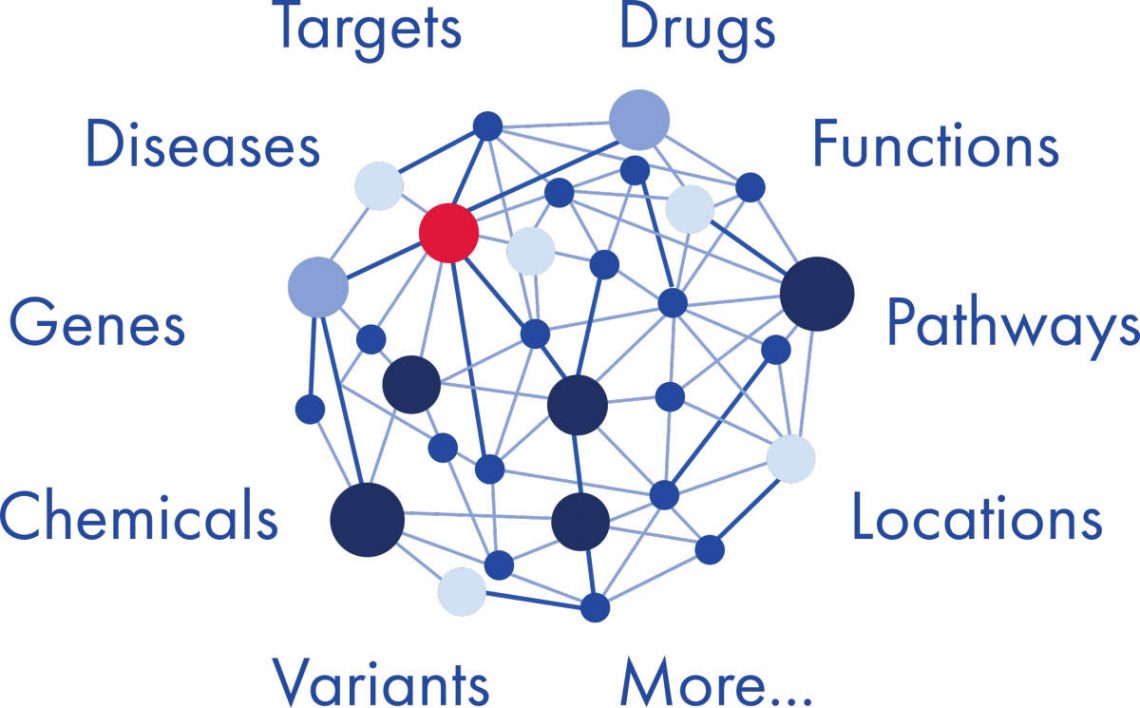Let us help you bridge the gap between data quality and meaningful insights
If you’re working in pharma or biotech, you probably rely on artificial intelligence (AI) to help you identify new drug targets or disease biomarkers within large datasets. As pharma scientists, we know AI is becoming standard practice. But what happens if your AI models are accidentally fed data from unreliable sources? Imagine wasting months of time and resources chasing a drug target that turns out to be a flop. Ouch.
The pitfalls of unreliable, unstructured biomedical data are not just hypotheticals – they’re a stark reality we and other researchers face around the globe. For AI models to provide reliable insights, the underlying data must be ‘high quality’, meaning it’s accurate, comprehensive, up-to-date and standardized.
Leave AI errors in the dust with expert-curated biomedical data
Enter QIAGEN Biomedical Knowledge Base (BKB), a repository of meticulously curated biomedical relationships data. We’ve tailored the BKB database with a keen, expert eye to ensure the molecular connections and relationships are only extracted from the highest quality sources like peer-reviewed scientific literature.
With continuous updates and enriched contextual information, such as tissue specificity and relationship directionality, we make sure you always have access to the most current and reliable data.

As a data scientist, you can mine our BKB through database files or directly from API integration. Our BKB data is particularly useful for creating graph-based models that handle interconnected heterogeneous biological data far better than simple relational databases do. With API integration, we can even help you customize BKB to seamlessly fit with your internal workflows.
What discoveries are waiting for you with the power of QIAGEN BKB?
Here are 3 ideas to get you started:
1. Identify high-quality drug targets using inferred causal interactions
Literature is full of publications showcasing associations between biomarkers, receptors and disease. But how do you know if that relationship is strong or weak within the context of finding a good target for drug development?
Using knowledge graphs powered by BKB data, you can thoroughly explore causal relationships between your target and disease, before you ever even set foot in the lab. Start with a high-level view of the pharmacological landscape of your target, then zoom in on the pathways directly linking target and diseases. From there, you can overlap pathways and functions to discover the exact mechanisms that connect a target to a disease, such as activation/inhibition signaling pathways or RNA binding.
2. Explore the current clinical landscape around your target
QIAGEN Biomedical Knowledge Base contains a wealth of clinical trial information connecting drug targets and their indications. Use knowledge graphs to intuitively navigate from your target to ongoing and completed drug trials, including whether the drug is an antagonist or agonist, the drug’s indication of use and trial phase.
Using BKB, you can efficiently prioritize diseases for drug development within the current clinical landscape surrounding your target.
3. Build disease interactomes using protein-protein interactions
What if there are promising disease indications for your target that have not yet been discovered in the literature? You can easily use BKB data to build a knowledge graph based on the protein-protein interactome (PPI) surrounding your target. You can use the PPI graph like a roadmap, measuring and ranking the protein-protein relationships by distance, and determine which diseases are related to those proteins.
This may even lead you to discover less obvious disease indications associated with your target – creating perfect positioning for your new drug to accelerate your entry into the market.
Knowledge graphs for drug discovery
"If 80 percent of our work is data preparation, then ensuring data quality is the important work of a machine learning team" (1).
Andrew Ng, Founder & CEO of Landing AI Tweet
Don’t miss your chance to supercharge your AI toolbox and transform your drug discovery
During a recent webinar we hosted, a unique and talented group of experts came together to share their insights. They used gene-disease knowledge graphs created by combining AI with BKB to reveal promising novel drug targets for neuroinflammatory disease and other devastating autoimmune disorders.
This webinar offers a unique opportunity to learn directly from the experts how you can best use BKB to enhance and advance your drug discovery strategy. See BKB in action with an example of real-world drug discovery. Watch the webinar now.
Explore more about knowledge graphs, AI and BKB
Continue your journey with us and explore how you can combine AI and QIAGEN Biomedical Knowledge Base to maximize your drug discovery efforts while minimizing your timelines:
AI in pharma: Make it work for you
QIAGEN BKB powers the leading pathway analysis software in life science research
Looking for a transformative software suite that already integrates QIAGEN Biomedical Knowledge Base? Was that a ‘yes, please’?
QIAGEN Ingenuity Pathways Analysis (IPA) merges the advanced analytics of BKB with intuitive user design – all without ever having to write a line of code. Learn more.
References:
- Big data to good data: Andrew Ng urges ML community to be more data-centric and less model-centric. Accessed on Oct. 10, 2023 https://analyticsindiamag.com/big-data-to-good-data-andrew-ng-urges-ml-community-to-be-more-data-centric-and-less-model-centric

